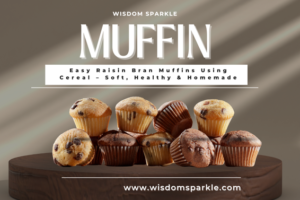
Staying active is not just about looking fit — it’s about feeling good, staying healthy, and enjoying life at every stage. When you move your body regularly, you don’t just build muscles or burn calories, you also boost your mood, sharpen your mind, and keep your heart strong. Many people believe that fitness is exclusively for young people and sportsmen, although exercise is beneficial at any age. Whether you are in your 20s, 40s, 60s, or even 80s, regular movement can help you stay strong, flexible, and energetic.
As we grow older, our lifestyle often becomes busier or more sedentary, which can slowly affect our health. Long hours at work, family responsibilities, or even the natural process of aging can make us feel tired or stiff. That’s why staying active is not just a choice — it’s a way to protect your health, maintain independence, and live life fully.
The good news? Fitness doesn’t have to be complicated. You don’t need heavy weights, fancy machines, or long hours at the gym. Even basic activities like walking, stretching, or mild exercises at home can have a significant impact. With a few easy tips, you can build a routine that keeps you active and suits your age, lifestyle, and comfort level.
In this blog, we’ll go step by step and explore easy fitness tips to stay active at any age, so you can enjoy a healthier, stronger, and happier life.
Why Staying Active Matters
Before diving into tips, let’s understand why staying active is so important:
- Maintains heart health – Exercise increases blood circulation and reduces the risk of heart disease.
- Boosts energy – Physical activity fights tiredness and makes you feel more energetic.
- Strengthens muscles and bones – Helps prevent weakness, falls, and injuries as you age.
- Supports mental health – Reduces stress, anxiety, and even depression.
- Improves flexibility and balance, allowing your body to move more easily in everyday life.
- Slows down aging effects – Staying active helps you maintain independence as you grow older.
So, whatever your age, fitness is your best friend.
Easy Fitness Tips for Every Age
1. Start with Walking
- The most basic and natural exercise is walking. You don’t need any equipment or a gym membership—just a comfortable pair of shoes and the will to move.
- Aim for 20–30 minutes a day. If that feels too much at first, start with 10 minutes and slowly add more.
- If you are busy, break it into shorter walks — for example, 10 minutes after each meal.
- Try to add more steps by taking stairs, walking while talking on the phone, or parking a little farther from your destination.
- Morning walks give you fresh air and sunlight, while evening walks help you relax after a long day.
👉 Walking keeps your heart healthy, burns calories, clears your mind, and boosts your mood. It’s one of the most straightforward ways to stay active at any age.
2. Stretch Every Day
Stretching helps keep your body supple, minimize stiffness, and prevent minor injuries. As we age, muscles and joints become tighter, so stretching is like giving your body a gentle wake-up call.
- Make basic stretches for your arms, legs, neck, and back.
- Stretch for 5–10 minutes in the morning to energize your body or at night to relax before sleep.
- While stretching, focus on breathing deeply; this also helps to quiet your mind.
- Yoga is an excellent technique to combine stretching, relaxation, and balance.
👉 A few minutes of stretching daily can make everyday tasks — like bending, lifting, or even climbing stairs — feel much easier.
3. Add Strength Training
Strength training is not just for bodybuilders, but for everyone. It helps you build muscle, protect your joints, and keep your bones strong, which becomes even more important as you get older.
- Use light weights, resistance bands, or your own weight.
- Begin with simple exercises such as wall push-ups, squats, and lunges.
- Do strength training 2–3 times a week — you don’t need long sessions; 15–20 minutes is enough.
- Everyday activities count too! Carrying grocery bags, lifting water bottles, or climbing stairs all strengthen your muscles.
👉 Strong muscles mean better balance, stronger bones, and more confidence in daily life.
4. Focus on Balance Exercises
Good balance is the secret to staying independent as you age because it prevents falls and injuries. Balance exercises are simple and may be performed anywhere.
- Try standing on one foot for 10–20 seconds, then switch to the other.
- Walk heel-to-toe in a straight line, as if you were on a rope.
- Yoga and Tai Chi are excellent for improving balance, flexibility, and peace of mind.
- Even standing on your toes while brushing your teeth or doing chores can improve stability.
👉 Better balance makes walking, climbing stairs, and even simple household work safer and easier.
5. Make It Fun
Fitness should not feel like a punishment — it should feel like something you look forward to. The trick is to choose activities you actually enjoy.
- Love music? Turn up your favorite songs and dance around.
- Enjoy nature? Go hiking, cycling, or even gardening.
- Like socializing? Join a group fitness class, walk with friends, or play a sport.
- If you’re short on time, do “exercise snacks” — short bursts of activity like skipping rope, climbing stairs, or quick stretches.
👉 When exercise feels fun, it doesn’t feel like “exercise” anymore — it becomes part of your lifestyle.
6. Listen to Your Body
Your body is the best guide when it comes to fitness. Some soreness is normal when you try something new, but pain or discomfort is a signal to slow down.
- Always warm up before exercising and cool down afterwards. This prevents injuries and helps your muscles recover.
- Drink water before, during, and after workouts to stay hydrated.
- Get enough rest between workouts. Your muscles need time to repair and grow.
- If you have health issues, check with your doctor before starting new exercises.
👉 Fitness should challenge you, but it should never harm you. Respecting your body’s signals keeps you safe and strong.
7. Stay Consistent
Consistency is more important than intensity. Doing a little every day is better than overdoing it once in a while and then stopping.
- Start small and build gradually — even 15 minutes a day is better than nothing.
- Set realistic goals like “I will walk 3 times a week” instead of “I will run 5 km daily.”
- Make fitness a part of your daily routine, like brushing your teeth or drinking water.
- Track your progress — small wins like walking more steps or stretching longer will keep you motivated.
👉 Remember, fitness is about consistency, not perfection. Small, daily efforts bring the biggest changes over time.
Fitness Tips by Age Group
Now let’s break it down according to different age groups, so you can see what’s best for you.
🌟 In Your 20s and 30s
This is the age to provide a solid foundation for lifetime health. Your body is energetic, your muscles recover faster, and your bones are still getting stronger. It’s the best time to explore different types of fitness and create a habit that stays with you.
- Mix cardio with strength training – Running, cycling, and swimming keep your heart strong, while gym workouts, bodyweight exercises, or resistance bands build lasting muscle strength.
- Experiment with workouts – Try fun group classes like Zumba or high-energy training like HIIT (High-Intensity Interval Training). Yoga and Pilates can help you gain flexibility and reduce tension.
- Watch your posture – Many young adults spend long hours sitting at desks. Strengthen your core and back to avoid future issues.
- Don’t ignore recovery – Sleep, stretching, and proper nutrition are just as important as workouts.
👉 Tip: Challenge yourself with new goals, but don’t push too hard. Taking care of your joints now will protect you later.
🌟 In Your 40s
By your 40s, metabolism slows down, and balancing work, family, and personal health can be tricky. This is the right time to stay consistent and protect your muscles and bones.
- Strength training is key – Lifting light weights or using resistance bands helps fight muscle loss and supports your metabolism.
- Keep flexibility alive – Add yoga, Pilates, or simple stretching to prevent stiffness and injuries.
- Strengthen your core – A strong back and abdominal area help with posture and reduce back pain, which is common in this age group.
- Add cardio smartly – Brisk walking, swimming, or cycling keeps your heart healthy without straining your joints.
👉 Tip: Balance workouts with stress-relief activities like meditation, breathing exercises, or a relaxing evening walk. Mental health is just as important as physical health.
🌟 In Your 50s
Your 50s are all about protecting your joints and maintaining bone strength. Hormonal changes, weight gain, or stiffness may show up, but gentle, regular exercise can help you stay active and confident.
- Low-impact cardio works best – Walking, swimming, or using a stationary bike gives you heart health benefits without straining knees or hips.
- Strengthen your muscles – Use light weights or resistance bands 2–3 times a week to keep muscles strong and bones healthy.
- Stretch every day – Flexibility is key at this age to prevent stiffness and discomfort.
- Focus on posture and balance – Exercises like Tai Chi or simple balance drills help prevent falls and keep you steady.
👉 Tip: Avoid high-impact activities like jumping or running on hard surfaces. Protect your knees and hips while staying active.
🌟 In Your 60s and Beyond
This is the age to focus on gentle movement, mobility, and balance. Staying active now helps maintain independence and improves quality of life.
- Choose gentle, enjoyable activities – Walking, Tai Chi, yoga, or water aerobics are safe and effective. They improve mobility and reduce stiffness.
- Work on balance daily – Standing on one foot, heel-to-toe walking, or light yoga poses can lower your risk of falls.
- Do light strength training – Even lifting water bottles, cans, or light dumbbells helps keep muscles active.
- Stretch daily – This keeps joints flexible and makes everyday tasks like bending, reaching, or climbing stairs easier.
- Stay socially active – Join walking groups, dance classes, or community fitness sessions. Social connection adds to mental well-being.
👉 Tip: Keep moving in any way possible — gardening, light household chores, or even dancing to your favorite music count as exercise. The goal is to avoid long periods of sitting still.
Lifestyle Habits to Support Fitness
Exercise works best when combined with healthy habits.
- Eat balanced meals – Add protein, vegetables, fruits, and whole grains.
- Stay hydrated – Drink enough water throughout the day.
- Sleep well, aiming for 7-8 hours of sleep to heal and recharge.
- Avoid sitting too long – Get up and stretch every hour.
- Stay positive – A good mindset keeps you motivated.
Overcoming Common Excuses
Many people avoid fitness because of excuses. Let’s tackle a few:
- “I don’t have time.” – Even 10 minutes of activity is better than nothing.
- “I’m too old.” – It’s never too late. Studies show people in their 80s can still gain strength with exercise.
- “I don’t have equipment.” – Use your body weight, climb stairs, or walk outside.
- “I feel tired.” – Exercise actually increases energy and lessens weariness.
Final Thoughts
Staying active is not about age — it’s about attitude. Whether you’re young or old, small steps can bring big results. Walking more, stretching daily, lifting light weights, and making exercise fun are all simple ways to keep your body and mind strong.
Remember, it’s never too early and never too late to start. The key is to move your body, stay consistent, and enjoy the journey.
So, take that first step today — because your future self will thank you!







